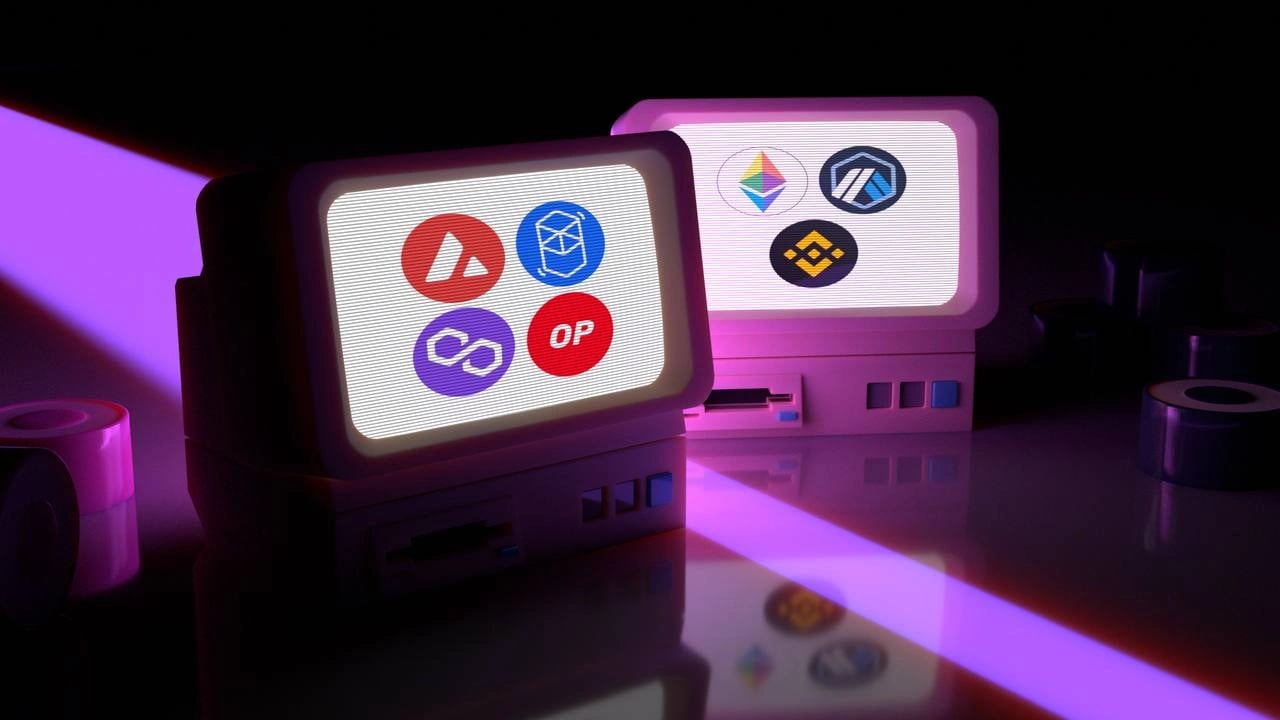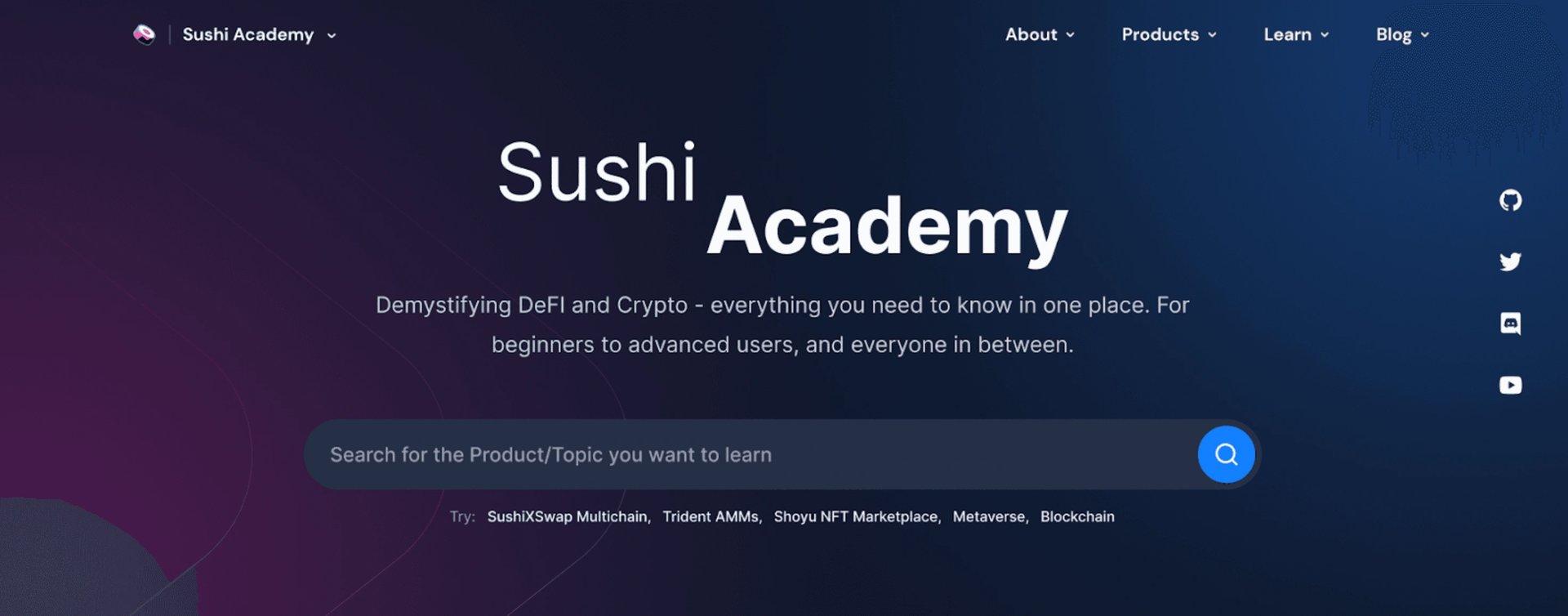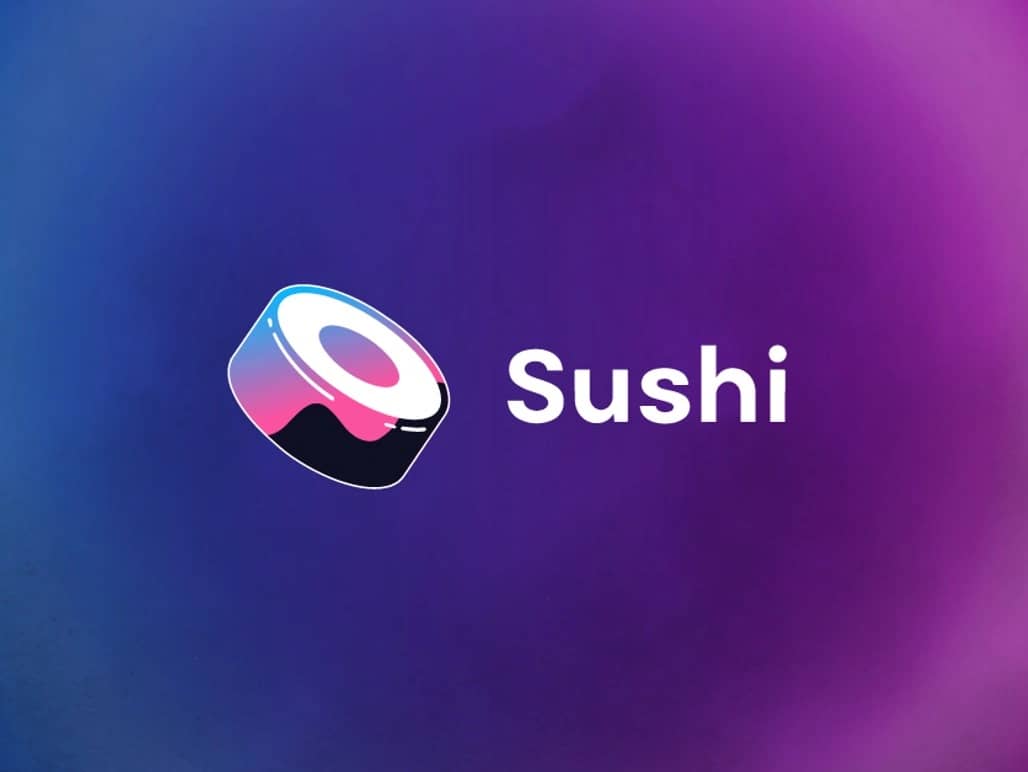Subscribe to wiki
Share wiki
Bookmark
SushiSwap
The Agent Tokenization Platform (ATP):Build autonomous agents with the Agent Development Kit (ADK)
SushiSwap
SushiSwap is an Ethereum-based blockchain protocol and decentralized exchange that encourages user participation in a platform that facilitates trading various crypto assets. It utilizes liquidity pools, where users lock up assets in smart contracts. This enables traders to exchange cryptocurrencies directly from these pools, facilitating token swaps efficiently. Chef Nomi founded SushiSwap. [1]
Overview
SushiSwap is a decentralized exchange (DEX) operating on the Ethereum blockchain that enables users to trade various cryptocurrencies without intermediaries. It utilizes an automated market maker (AMM) model, initially popularized by Uniswap, where liquidity pools are used to facilitate trading. Users can swap tokens directly through these pools, with incentives provided to those who contribute liquidity to the platform. SushiSwap offers a range of DeFi solutions, including lending and borrowing protocols, to provide users with a comprehensive decentralized finance experience. [1][2]
Governed by the Sushi DAO, SushiSwap allows token holders to participate in decision-making by voting on proposed changes to the platform. The native token of the ecosystem, SUSHI, grants holders voting power and a share of trading fees and staking rewards. SushiSwap was founded as a clone of Uniswap but has since developed to introduce additional features like liquidity mining and governance. [1][2]
History
SushiSwap was created in August 2020 by an anonymous developer, Chef Nomi, who adapted the Uniswap protocol. Initially, SushiSwap attracted users by offering token rewards to liquidity providers and introducing the SUSHI token to incentivize participation in the protocol. Despite an early surge in activity, SushiSwap faced challenges, including concerns over Chef Nomi's sale of SUSHI tokens. Control of the platform was later transferred to Sam Bankman-Fried of FTX, followed by Jared Grey assuming leadership as "Head Chef" in 2022. [3]
Exploits
On April 9, reports surfaced on Twitter from blockchain security firms CertiK Alert and Peckshield, indicating that a bug in a smart contract on SushiSwap led to losses exceeding $3 million. The bug was linked to the approval function in Sushi’s Router Processor 2 contract, which aggregates liquidity for coin swaps. Despite prompt action, approximately $3.3 million was lost due to the bug. Following the incident, Jared Grey confirmed on Twitter that a substantial portion of the lost funds had been recovered through a white hat security process. [20]
“We’ve confirmed recovery of more than 300ETH from CoffeeBabe of Sifu’s stolen funds. We’re in contact with Lido’s team regarding 700 more ETH.” - Jared Grey, Sushi’s Head Chef.
Chef Nomi Controversy
On September 5, 2020, Chef Nomi withdrew 2.5 million SUSHI tokens and 20,000 ETH from the liquidity pool, worth around $6 million and $7 million, respectively. This move followed growing criticism that Chef Nomi controlled a significant portion of the SUSHI tokens. As news of Chef Nomi's withdrawal spread, the price of SUSHI tokens plummeted by more than half in just 24 hours, dropping from $5 to $2.35. The decline added to the week's challenges for SUSHI's price, which had peaked at $10.81 before the downward trend began. In response to the backlash, Chef Nomi defended his actions on Twitter, stating that he sold his tokens to benefit the community and pass control to other developers. He denied any intention of an exit scam and compared his actions to those of Litecoin founder Charlie Lee. [4]
“People asked if I exited scam. I did not. I am still here. I will continue to participate in the discussion. I will help with the technical part. I will help ensure we have a successful migration.
@SatoshiLite did that and Litecoin had no problem surviving.”
On September 11, 2020, Chef Nomi returned the $14 million worth of ether (ETH) he had cashed out from the decentralized exchange the previous week. The pseudonymous individual transferred the 38,000 ETH to the original developer fund wallet. He publicly announced this decision on Twitter, apologizing to the community and stating that the community should determine any reward he deserves for creating the project. [5]
“I have returned all the $14M worth of ETH back to the treasury. And I will let the community decide how much I deserve as the original creator of SushiSwap. In any currency (ETH/SUSHI/etc). With any lockup schedule you wish.”
Products
Bentobox
The BentoBox serves as a vault for tokens, generating yield through flash loans and strategies for protocols built on top of it. By utilizing BentoBox, users benefit from optimized token functions, simplified approval processes, and a single vault system that enhances gas efficiency and flexibility. Tokens stored in the BentoBox can be flash loaned, with fees distributed to shareholders, and can employ various strategies for profit generation, subject to community and Sushi team approval. Depositing tokens into the BentoBox provides users with shares representing their portion of the total token amount, offering potential returns from flash loan fees and strategy profits. However, slight rounding differences may occur due to limited precision in accounting. [6]
Kashi
Built on BentoBox, Kashi 1.0 was a lending and margin trading platform atop BentoBox, enabling users to establish tailored and gas-efficient markets for lending, borrowing, and collateralizing various DeFi tokens, stablecoins, and synthetic assets. Its isolated market framework allowed for diverse token support, mitigating the risk of individual assets impacting the entire protocol, unlike traditional DeFi money markets. [7]
On December 7, 2022, Kashi 1.0 ceased accepting deposits and borrow requests via its user interface. While the UI remained accessible, the platform no longer actively maintained its markets. Users were advised to withdraw or repay their positions if they had any outstanding. The deprecation of Kashi was attributed to a strategic shift in focus towards prioritizing the DEX stack as part of a broader roadmap revamp. [7]
Chefs
MasterChef
MasterChef serves as the primary smart contract for Sushi's yield farming, facilitating the distribution of SUSHI token rewards to liquidity providers. It encourages users to contribute liquidity by offering incentives in SUSHI tokens, distributed based on the proportion of liquidity provided. [8]
MasterChefV2, an enhanced version of the original contract, operates similarly but includes additional functionality to accommodate secondary rewarders for distributing extra tokens alongside SUSHI. Users participate by depositing or staking their LP tokens, earning rewards based on their liquidity contribution ratio. If a rewarder contract is set, users receive additional tokens alongside SUSHI when harvesting from the contract. [9]
MiniChef
MiniChef functions similarly to chef contracts like MasterChefV2 but is specifically designed for yield farming on networks other than Ethereum, where MasterChefs are deployed. Like other chef contracts, MiniChef requires pre-filling with SUSHI tokens, which are then gradually distributed over time based on the sushiPerSecond parameter set on the contract. Users can participate by depositing or staking their LP tokens in the MiniChef contract, earning rewards proportional to their liquidity contribution ratio. If a rewarder contract is set, users receive additional tokens alongside SUSHI when harvesting from the contract. [10]
SushiBar
SushiBar allows SUSHI token holders to stake their tokens and receive xSUSHI in return, representing their ownership in the Sushi Bar. Holders of xSUSHI are entitled to a portion of the platform's trading fees, equivalent to 0.05% of the standard trade fees on the Sushi v2 AMM. These rewards are distributed at an annual percentage yield (APY) of approximately 11%, providing users immediate access to rewards while their SUSHI holdings grow. Additionally, xSUSHI grants users access to SushiSwap's governance system, enabling them to maintain voting rights. [11][12]
Furo Streams
Furo is a platform designed for token streaming and vesting creation, offering simplified payroll processes and precise control over fund distribution. It enables users to create token streams, allowing funds to be distributed over any desired timeframe, and facilitates the creation of customizable token vestings with flexible cliffs and schedules. This functionality benefits companies looking to streamline payroll processes and efficiently manage token allocations to team members. [13]
SushiXSwap
SushiXSwap is a cross-chain AMM facilitating feeless swaps across chains through LayerZero's Stargate protocol. It optimizes liquidity utilization by tapping into Sushi's liquidity across all chains involved in the transaction, ensuring deep liquidity and optimal pricing. Leveraging Stargate's secure bridging technology, SushiXSwap can scale to support multiple chains while prioritizing decentralization. Plans include integrating additional bridges to enhance routing efficiency and price discovery for users across various tokens and chains. [14]

Sushi Bonds
Sushi Bonds is a DeFi initiative that introduces Protocol Owned Liquidity (POL) through a collaboration between SushiSwap and Bond Protocol. This approach transforms traditional bonds into POL, departing from conventional liquidity mining practices by enabling token projects to amass assets and retain control over liquidity pools. Developed in partnership with SushiSwap, Bond Protocol, Steer Protocol, and Serious People, Sushi Bonds aims to streamline liquidity management efficiency while ensuring project authenticity and adaptability. Focused on fostering enduring growth across diverse blockchain networks, Sushi Bonds presents a new development in DeFi liquidity solutions, prioritizing long-term sustainability. [15]
Sushi Academy
Sushi Academy is a comprehensive guide to Sushi and DeFi, catering to beginners and advanced users. Its mission is to educate users on all aspects of Sushi and the DeFi ecosystem, aiming to simplify the onboarding process for newcomers. The Academy website has a variety of articles covering basic swapping, product explanations, and advanced lending and borrowing strategies. [16]
The Academy provides information on Sushi products, including tutorials, walkthroughs, and technical documentation, organized into two levels based on product and experience complexity. Users can also utilize the search bar for specific queries or browse topics by difficulty level. The mobile-optimized site ensures easy access to information on various devices, facilitating learning on the go. [16]

MISO
MISO was an open-source suite of smart contracts designed to simplify the process of launching new projects on the SushiSwap exchange. It aimed to attract capital and trading activity by providing technical and non-technical project founders with a launchpad. Through trusted, open-source contracts, MISO ensured secure and successful deployments. [16]
MISO contained three types of auctions for development teams to use:
- Dutch Auctions were characterized by a descending price per token, initially set high and gradually decreasing until all tokens were allocated. Participants committed to receiving a minimum total value rather than bidding for specific tokens, often obtaining more tokens than initially bid for.
- Batch Auctions distributed tokens from a single pool among all participants, with the token price determined by the total raised amount. Each participant received a share of tokens proportional to their contribution, making batch auctions inclusive for all participants regardless of their net worth.
- Crowd sales were straightforward auctions with a predetermined token price and quantity. They were suitable when the token price was established in advance, serving as a method to distribute tokens and laying a foundation for future listings on SushiSwap. MISO crowd sales enabled any project to initiate an auction, facilitating trading on the open Sushi market.

SUSHI
SUSHI initially operated as an ERC-20 token on the Ethereum blockchain, serving as a governance token for the Sushi ecosystem and providing incentives to liquidity providers on the SushiSwap DEX. Holders can stake SUSHI to earn xSUSHI, granting them a share of trading fees. In November 2023, Sushi Head Chef Jared Grey proposed a redesign of SUSHI's tokenomics, including features like time locks on xSUSHI staking, perpetual token emissions ranging from 1.5% to 3%, and variable burning of swapping fees. [3]
Tokenomics
The total supply of SUSHI tokens is capped at 250 million. They were gradually released into the market in 2020 and finished in November 2023. Ten percent of newly generated SUSHI tokens from each block are allocated to a development fund supporting Sushi's ongoing development efforts. [3]
In November 2023, SushiSwap CEO Jared Grey proposed a new tokenomics model for SUSHI to bolster the project's treasury reserves and ensure its ongoing operation and development. The proposed model introduced several fundamental changes. Firstly, xSushi stakers would no longer receive fee shares but would earn emissions-based rewards in time-locked tiers, with larger rewards for longer lock-up periods. Liquidity providers (LPs) also received a portion of swap fees and additional emissions-based rewards if they locked their liquidity, albeit forfeiting rewards upon early exit. Additionally, the new tokenomics incorporated mechanisms for token burns, utilizing a portion of swap fees to buy and burn SUSHI and burning rewards removed prematurely from staking and LP programs. Another portion of swap fees was used to lock liquidity and support SUSHI's price, aiming to reduce inflation to 1-3% annually. [17]
xSushi
xSushi is a liquidity provider (LP) token obtained by staking $Sushi in the SushiBar, representing your ownership in the Sushi Bar pool. Its value grows over time as the platform accumulates fees, with a portion of Sushi permanently locked in the protocol. Following the passage of the Kanpai Proposal in December 2022, fees for xSushi were redirected to the Treasury for one year, but xSushi remains eligible for use in governance proposals. [17]
Sushi DAO
Sushi operates under the governance of its decentralized autonomous organization, the Sushi DAO. SUSHI token holders can vote on proposals for platform modifications, with the core development team responsible for implementing the approved changes. [21]
SEC Subpoena
In March 2023, The U.S. Securities and Exchange Commission served a subpoena to Sushi DAO and Head Chef Jared Grey, as revealed on Tuesday. In response, Grey proposed establishing a "Sushi DAO Legal Defense Fund" to cover legal expenses for core contributors. The proposal suggested allocating $3 million in Tether (USDT) for core contributors, with an additional $1 million in USDT available if the initial $3 million is depleted. [22]
According to the proposal, the fund would cover attorneys' fees and other expenses for core contributors involved in the project since April 2022, when "Sushi 2.0" was ratified. Payments from the fund would continue until legal proceedings conclude. [22]
Transition Vote
In a signal vote on April 10th, 2024, more than 62% of SushiSwap voters supported the transition to a "Labs model," indicating backing for the DEX's move towards a less decentralized business structure. The proposal was introduced on March 26th and sparked significant debate within the SushiSwap community. Under the plan, the exchange aims to establish Sushi Labs, an autonomous entity responsible for administrative, technical, and operational functions within the Sushi ecosystem. [23]
Under this model, tokenholders would continue determining treasury allocations without involvement in operational matters. Based on current prices, Sushi Labs would receive 25 million SUSHI tokens, valued at nearly $39 million. Additionally, Sushi Labs would become the exclusive recipient of any future airdrops from affiliated protocols and partners. [23]
Several community members on Sushi's governance forum opposed the proposed plan, citing concerns about the treasury's financial stability and allegations of voting power manipulation. [23]
“I think it would be important to have a sizable amount of all revenues, airdrops included, going directly the the DAO treasury. This would not interfere with hiring, firing, or other operations [...] Treasury should not be ignored. [...] I suggest a split of revenues between treasury and operations” - Nick Rishwain, Sushi DAO community member.
Naïm Boubziz, another member of the SushiSwap community, alleged on X that the move constituted a hostile takeover. Boubziz claimed that the core development team had created new wallets to boost their voting power before the vote. Jared Grey addressed the criticism: [23]
“After consulting our legal counsel, I directed the operations team to execute the YAY vote with the OPs wallet and its holdings due to the threat of a hostile takeover…Much of the current product development roadmap’s limitations and delays stem from the DAO’s outsized ambition, unrealistic expectations, and budget constraints endorsed through snapshot votes from when Sushi’s resources were multitudes greater.”
Partnerships
Chainlink
In September 2023, Sushi announced the integration of Chainlink CCIP, incorporating Arbitrary Messaging, Token Transfer, and Programmable Token Transfer functionalities aligned with Sushi's objectives. This integration facilitated smooth liquidity transfers across multiple chains and enhanced security measures. Rate limits, adjustable on both token and lane levels, served as protective mechanisms against potential exploits or issues on destination chains. Additionally, collective rate limits ensured that individual token rate limits remained safeguarded against extensive abuse. [18]
BitTorrent
In November 2022, Sushi launched its automated market maker (AMM) on the BitTorrent Chain (BTTC). BTTC is a Layer 2 scaling solution offering rapid and cost-effective transactions alongside seamless interoperability across Ethereum Mainnet, Binance Smart Chain (BSC), and TRON. This integration allowed users to engage in token swaps and trading using the familiar Sushi user interface on the BTTC platform. [19]
KlimaDAO
On July 5th, 2022, SushiSwap collaborated with KlimaDAO, a blockchain-based carbon credit protocol, to enable traders to offset their carbon emissions on the Polygon network. A governance proposal from SushiSwap detailing the partnership concluded on July 4, receiving over 99% of votes in favor. This proposal allows Sushi users to offset their carbon footprint through an optional toggle integrated into the exchange's user interface. The initiative garnered significant support from the Sushi community in the project's governance forum. [24]
“I am fully in support of this proposal… Sushi can be seen as a social leader in the space, paving the way for others. The cost for Sushi would be negligible developer coordination overhead and will benefit its user base and the Polygon ecosystem as a whole disproportionally.” - ShimonD of KlimaDAO community
Layer N
In February 2024, Sushi launched Susa, a derivatives exchange built on Layer N, a high-performance Layer 2 network composed of custom and optimized rollups. This collaboration brought together Layer N's technological advancements and the established DeFi community supporting one of Ethereum's decentralized exchanges to address the gap in decentralized derivatives trading. Susa utilized Layer N's Nord Engine to process over 100,000 transactions per second with latency periods under one millisecond, rivaling centralized exchanges in performance. [25]
“Sushi is excited to partner with Layer N, as we fully embrace the spirit of decentralized finance (DeFi) by combining our expertise to develop superior products. Layer N's modular approach to rollups unlocks greater capital efficiency and deeper liquidity, all while leveraging the security of Ethereum. This approach aligns perfectly with the modular network strategy gaining traction in the DeFi space, making Layer N one of the best technology stacks to build on.” - Jared Grey, Sushi’s Head Chef.
Leveraging Layer N's StateNet architecture, Susa allowed developers to build custom applications atop the exchange, ranging from simple, smart contracts to fully developed rollups, tapping into Susa’s liquidity and user base. As one of the first exchanges on Layer N’s StateNet, Susa initially offered perpetuals, with plans to expand into spot and exotic markets. The platform introduced user-centric features to enhance the DeFi experience, aiming to narrow the performance gap between decentralized and centralized exchanges.
“Sushi has been one of the core DeFi protocols for years, and we are thrilled to support them in their next chapter. We are excited to see Susa be one of the first rollup nodes to launch on Layer N. Susa is poised to become one of the largest perpetual exchanges in decentralized space and build one of the largest ecosystems.” - Dima Romanov, CEO of Layer N.
See something wrong?
The Agent Tokenization Platform (ATP):Build autonomous agents with the Agent Development Kit (ADK)
